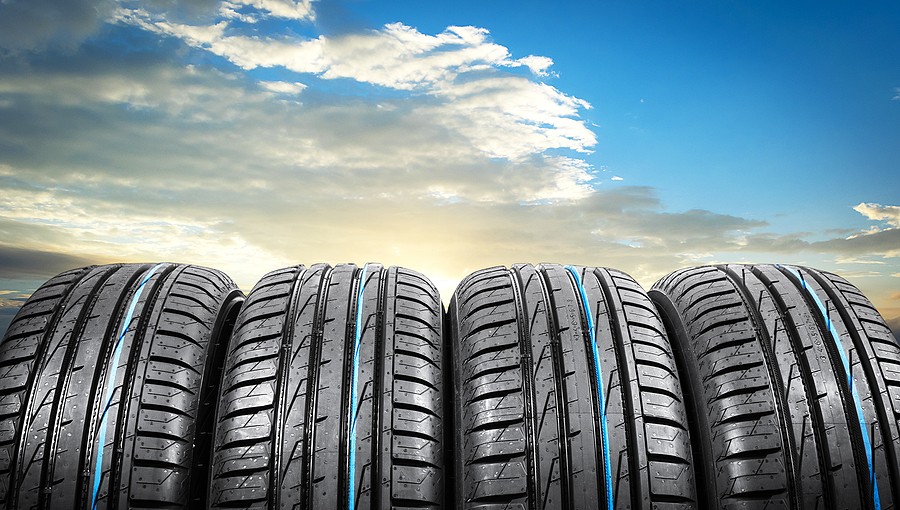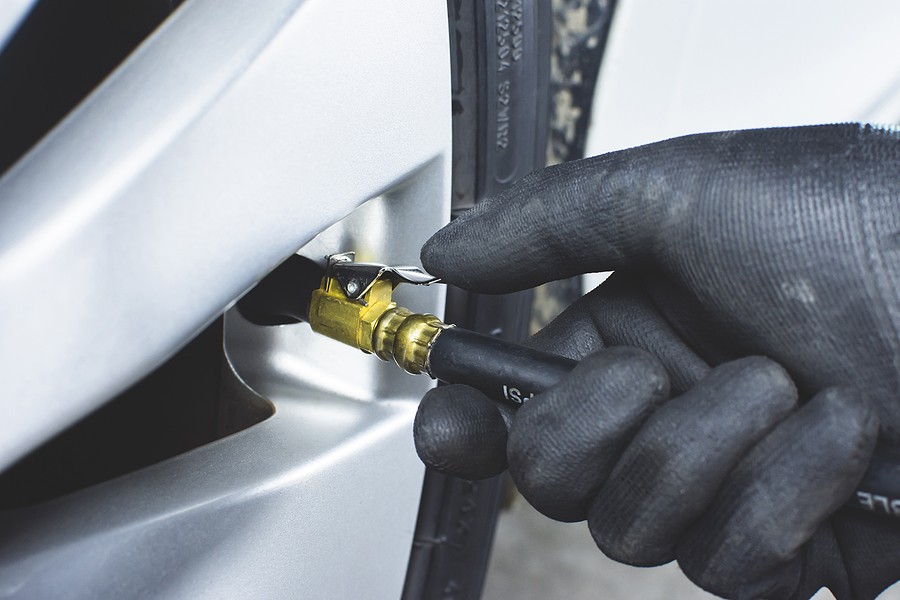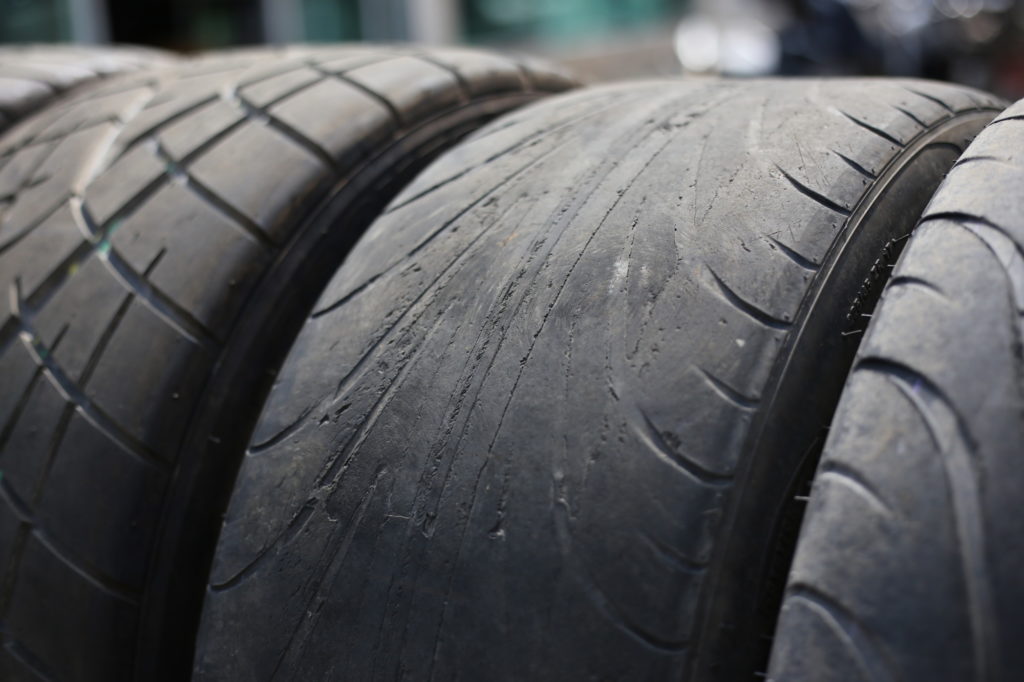Did you know that every year, motorists all over the world discard some 200 million vehicle tires?
Or that the New York alone generates between 18 and 20 million of these waste tires each year?
That's right!
This explains why the state has become stricter when it comes to waste tire management. For starters, it's illegal to dispose of waste tires in landfills. Those caught doing so will face criminal, civil, or administrative penalties.
So, if not the landfill, where do all those tires go? What happens to old tires once New York motorists discard them?
We’ll answer all your questions in this post, so be ready for some amazing tire recycling facts!

Most Old Tires Go to Crumb Rubber Facilities
One of the top priorities of the NY State is to turn old tires into value-added products. To do this, many of the collected waste tires in NYC go to tire-grinding facilities. These are specially-equipped facilities that turn tires into crumb rubber.
Crumb rubber is a material derived from scrap tires. It has many applications, such as its use as a paving material and infill for synthetic turfs.
To make crumb rubber, scrap tires undergo a super-fine grinding process. The grinding process also removes the tire's reinforcing materials, such as steel. Other contaminants, such as glass, rock, and debris, are also taken out of the ground-up rubber.
Crumb Rubber Modifier as a Road Base and Paving Material
Crumb rubber modifier (CRM) is a technology that uses scrap tire rubber in asphalt paving. The “modifier” in its name refers to how crumb rubber “modifies” the properties of asphalt.
There are two ways to incorporate scrap tire rubber into asphalt paving mixes. These include the wet process and the dry process.
In the wet process, the crumb rubber alters the properties of the asphalt cement.
In the dry process, crumb rubber replaces a tiny portion of the fine aggregate. The rubber particles are then mixed with the rest of the aggregate. After that, they go into the hot mix asphalt concrete.
Products made from the dry process are often called “rubber-modified asphalt concrete” (RUMAC).
Adding CRM to asphalt paving mixes has shown to increase the viscosity of concrete. It also improves rutting resistance while reducing its risks of cracking. All these help improve the longevity and structural strength of concrete products.
New York is one of the main users of CRM in road and pavement construction. In fact, NY has successfully constructed applications using generic CRM dry technology.

Infill Material for Synthetic Turf Fields
Home to more than 30 sports stadiums, New York relies heavily on synthetic turf fields. Many of these fields consist of crumb rubber. This ground-up tire byproduct serves as infill material for the artificial turf.
The use of crumb rubber in sports fields allows for water conservation. Since the material replaces natural grass, it doesn't need water to “survive”. Also, compared to natural grass, synthetic turfs aren't as high-maintenance.
Moreover, artificial turf eliminates the need for herbicides, pesticides, and fertilizers. Granted, crumb rubber contains chemical additives, like zinc and sulfur. However, studies have found that they release these chemicals in very low concentrations.
Making Playgrounds and Recreation Areas Safer
Did you know that by recycling your old tires, you can help make children's play areas safer?
That's because old tires that get turned into crumb rubber are also used in rubber floors. Rubber floors are less slippery, so they can help minimize slips, trips, and falls.
Rubber flooring is also softer than concrete or compact soil. This “softness” can also provide a cushioning effect that can help reduce injuries.
To top it off, rubber can withstand high loads, so it's a good flooring material for high-traffic areas. Moreover, they're easier to maintain than other flooring materials like carpeting.
This is why many of the state's playgrounds and recreation spots now use some sort of rubber floors. You'll also find them in athletic tracks and fields, seeing as runners and cyclists are prone to falls. Furthermore, tracks that use crumb rubber also allow for smoother rides.
If you're planning to junk a car, consider taking out its wheels and tires first. You can sell them to a junk car-buying business, which in turn, will process them for recycling. These businesses often work with crumb rubber manufacturers.

Anti-Slip Flooring and Floor Mats
Rubber flooring is also used in other places with an increased need for slip prevention. These include hospitals, daycare facilities, nursing homes, and restaurant kitchens. You can even install rubber floors in your own home, particularly in children’s rooms.
Even if they don’t prevent all slips and falls, they can still help minimize the impact. Again, that’s thanks to the innate cushioning properties of rubber.
Aside from flooring, crumb rubber is also a good material for anti-slip mats. They can either have an embossed surface or a non-slip backing to provide slip resistance. And since they're durable, they can withstand heavy foot traffic and use.
Tire-Derived Fuel
Another huge potential for old tires is fuel production.
That's right: tires are a source of fuel, known as “tire-derived fuel” (TDF). TDF comes from all sorts of waste tires, including whole, shredded, and chipped tires.
Once shredded, the rubber is then mixed with other types of fuels, such as coal or wood. Paper mills, power plants, and concrete kilns can then use this as their fuel source.
At this point, you're likely thinking that burning rubber sounds like a bad idea. Aside from the smell, there's also the environmental effects.
According to studies though, TDF generates lower emissions compared to other traditional fuels. What's more, scrap tires can produce between 25% and 50% more energy than coal. And, compared to wood, it can produce 100% to 200% more energy.

Tire-Derived Carbon for Batteries
Research has shown that old tires are also a good low-cost source of carbon for batteries. These include Li-ion, K-ion batteries, and supercapacitors among other battery types. Researchers also say that tires can produce carbon for batteries for as low as $0.06 per kg.
Decorative Mulch
Old tires also get turned into decorative mulch. Yes, it's another product that uses crumb rubber.
Like artificial turf, decorative mulch mimics natural grass without the need for watering. Decorative mulch, however, is more geared towards aesthetics, such as for styling gardens. They do offer safety features as well, much like how rubber flooring does.
What Happens to Old Tires That Aren’t Disposed of Properly?
Land pollution is one of the biggest effects of improper disposal of waste tires. It can also give rise to tire fires, which can cause air and water pollution. Moreover, tires that sit out in the open can harbor disease-causing insects.
Tire Fires
Scrap tires, on their own, are not hazardous waste. However, they can become a serious threat if a tire fire occurs. Freely-burning tires break down into toxic compounds, including heavy metals, oils, and gases.
These heavy metals and oils can then seep into the ground and mix with surface water. If this happens, it can cause serious land and water pollution. Moreover, the oil that comes from burned tires is also highly flammable.
The gases that open tire fires produce are also heavy air pollutants. They emit gases that are more toxic than those produced by combustors. Some of these pollutants include carbon monoxide and volatile organic compounds.
They Become a Haven for Mosquitoes
Mosquitoes aren't just pesky, annoying insects. Some of them can carry a parasite that causes malaria, a life-threatening disease. Up to 1,700 new cases of malaria occur in the U.S. every year.
Another life-threatening, mosquito-borne disease is dengue fever. Mosquitoes infected by dengue virus can transmit this through their bite.
So, what then is the connection to old tires?
Well, discarded tires can collect water, which, if undisturbed, can harbor mosquitoes. Stagnant water in tires is an excellent breeding ground for mosquito larvae. Discarded tires also offer shade and warmth, which are necessary for mosquito incubation.

Properly Dispose of Your Old Tires Now
There you have it, your ultimate guide on what happens to old tires and how the State of New York recycles them. What's important is that, as a New Yorker, you'll abide by the proper waste tire disposal laws. You can bring them to one of the state's recycling facility, or you can also sell them to make some cash.
Need help in getting rid of old tires or removing a junk car that’s just sitting out in your yard? Then please feel free to get in touch with us. We'll be happy to pay you in cash in exchange for your old tires and other junk car parts!



